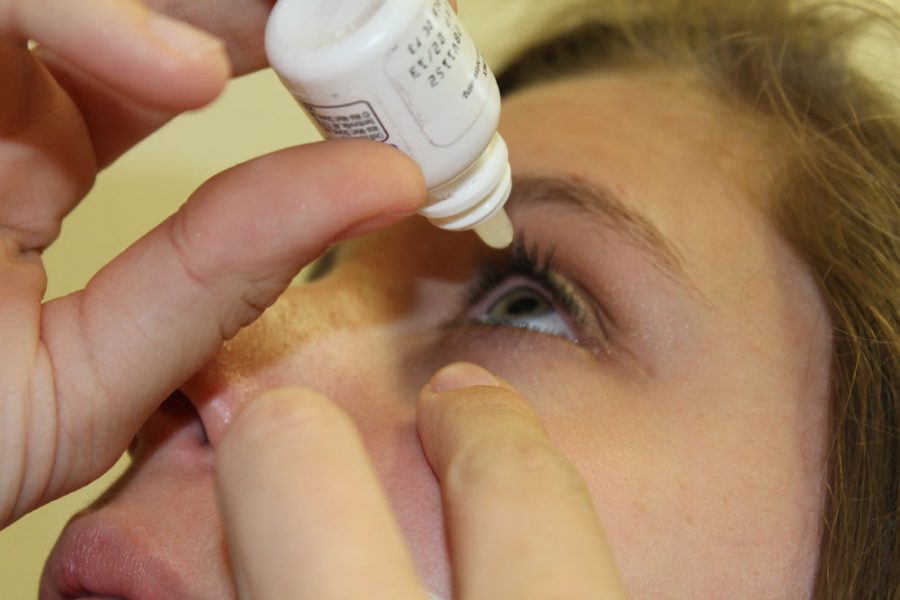
When senior Frank Rae was in kindergarten, his allergies set him apart from other students. While they ate their hearty spaghetti smothered in marinara sauce, Rae had to eat plain noodles. While other students ate pizza, Rae ate peanut butter sandwiches.
He is allergic to an ingredient in tomato sauce which causes his throat to contract, restricting his breathing.
“My allergies as a kid sometimes made me feel like an outcast,” Rae said. “I had to eat apart from the other kids. And kids aren’t always the most accepting.”
According to the Centers for Disease Control, an estimated four to six percent of people 18 and under have severe food allergies.
Dr. Ulus Atasoy, an allergist at the University of Missouri-Columbia, said during the last 30 to 40 years, there has been an increase in both allergies and asthma diagnoses. Though the reason for this increase is unknown, there are several theories. According to fooddrugallergy.ucla.edu, potential reasons include excessive cleanliness that interrupts the natural development of the immune system or a delayed introduction to foods that have a high risk of triggering allergic reactions.
The site also said factors such as family size, environment and drug use can also have an effect on the likelihood of developing allergies.
The most common food allergies are milk, peanuts, tree nuts and eggs, according to the CDC. In 2012, the United States had over 1,500 deaths and one million instances of people seeking emergency help for allergies, Atasoy said.
Sophomore Anmol Sethi faces an extreme peanut allergy. Sethi learned of her allergy in second grade, and it has affected her ever since.
“The very first time my parents learned how life threatening my allergy was during second grade on Valentine’s Day,” Sethi said. “I had a bite of a cookie that had peanut butter in it, and as soon as I got home, symptoms of anaphylactic shock started to appear. My parents rushed me to the emergency room, and I spent the rest of Valentine’s Day getting treatment.”
People such as Sethi who have severe food allergies are not only endangered upon ingesting the food. For some people, even inhalation of the allergic substance can be dangerous. Restaurants, family gatherings and school dances can all be treacherous. Anytime Sethi travels by airplane, she has to make sure that the hostesses have not served any peanuts on board for the entire day.
“There are major impacts upon people’s lives who have severe food allergies,” Atasoy said. “For little kids, going to social events … is akin to walking across a minefield; one never knows if they will be offered food that contains the offending substance and have a life-threatening reaction.”
Though there is no cure for allergies, devices are used by people to combat symptoms. Inhalers, EpiPens, allergy shots and immunotherapy are all possible treatments.
“The best way of treating allergies is avoidance,” Atasoy said. “One can receive allergen immunotherapy to desensitize the patient to the offending allergen. However, there are medical centers which have developed desensitization protocols for severe peanut allergies … they can work and build up tolerance so that the patient can go from eating 0.5 peanuts, which would cause anaphylaxis, to 10 without problems.”
Immunotherapy, or allergy shots, “is a method for increasing the allergic patient’s natural resistance (tolerance) to the things that trigger the allergic reactions,”according to the American College of Allergies, Asthma and Immunology. Scientists are exploring the future of allergy treatment with vaccines. While treatments can reduce some risks of allergies, they will always remain a part of life for most.
“I have to be careful, which can mean not being able to eat some of the things my friends can, but I can still enjoy many types of foods,” Sethi said. Allergies “will always be part of my life, but as I get older, I have learned how to accommodate [them] and live with [them].”
By Sam Mitchell













































































sophiewhyte • Apr 25, 2013 at 10:22 am
Allergies suck, I’m lucky I don’t have any. I do have asthma howevever, which I got earlier this year. It isn’t fun.
alexgompper • Apr 25, 2013 at 8:20 am
I’m really glad that I don’t have any allergies. But I’ve also kinda wondered what having one would be like.
grahamasarus • Apr 25, 2013 at 8:19 am
I’m glad I don’t have serious food allergies but seasonal allergies are pretty rough too.